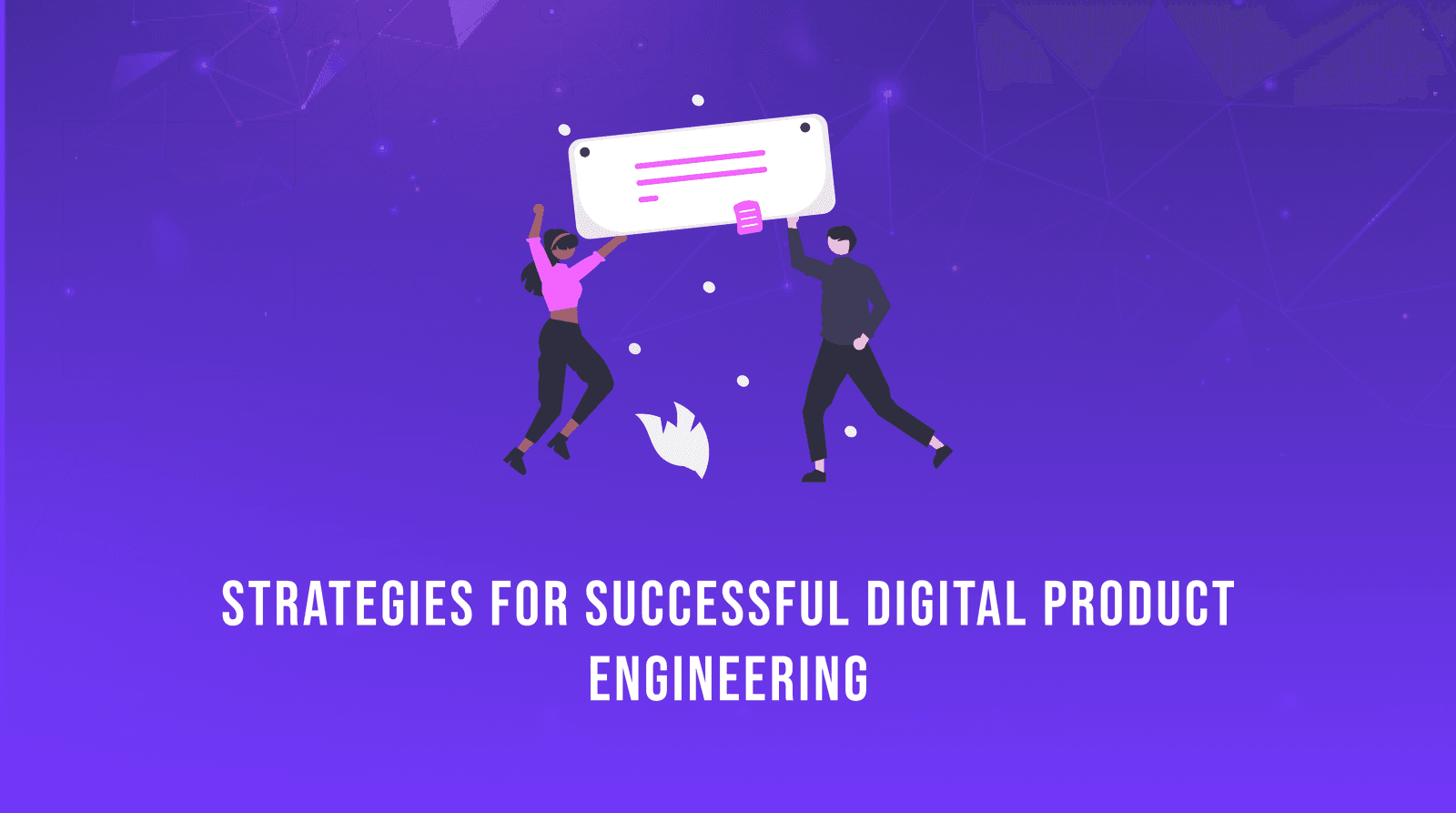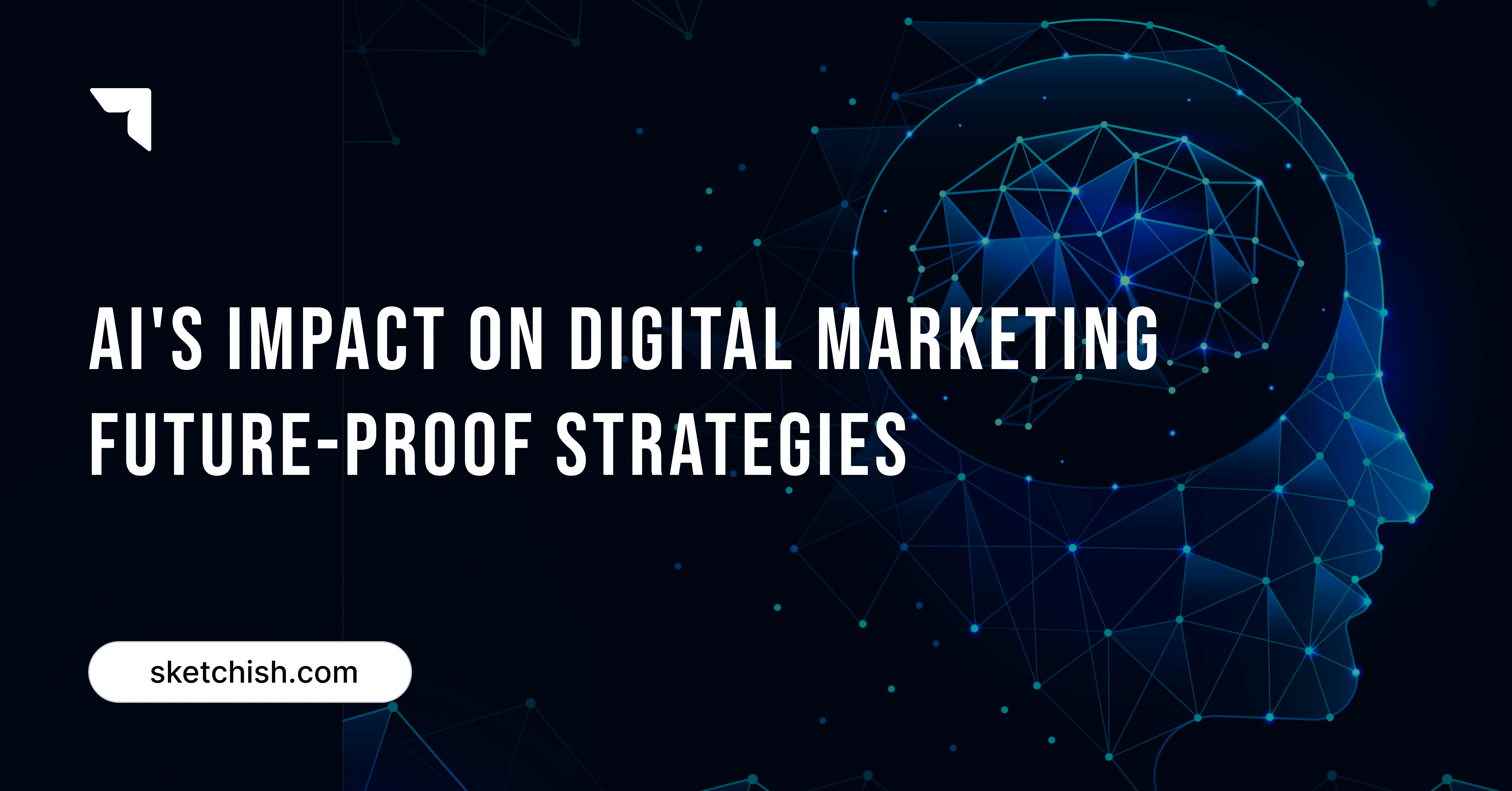Summary by AI ✦
Businesses are always looking for new ways to innovate, stand out from the competition, and satisfy the ever-changing needs of their customers in today's fast-paced digital world. Digital product engineering, a process that combines technology, design, and strategy to produce advanced digital products and services, is at the center of this change.
Based on a report by GM insights, it is projected that the market size for digital product engineering services will reach $2000 billion over the next eight years.
This in-depth guide will take you deep into the world of digital product engineering, covering its importance, key principles, strategies for success, and how platforms like Sketchish can aid in this journey.
What is Digital Product Engineering?
Digital product engineering is a structured approach for creating, creating, executing, and managing digital product design. It covers a product's whole lifespan, from concept to implementation, utilizing digital technology to promote innovation and successfully address customer needs.
In order to provide seamless digital experiences, this technique uses an integrated approach that brings together components of engineering, design, and business strategy.
It involves using software, IT solutions, hardware, and technical components to create innovative and personalized products. Here’s a breakdown of what it entails:
Digital Product Engineering is very important for modernizing, optimizing, and making businesses more sustainable. It allows for a more agile and responsive product development process, improved time to market, and better user experience.
In short, Digital Product Engineering is about leveraging digital technologies to create products that are agile, high-performing, and meet the evolving needs of the market and consumers.
Digital Product Engineering Importance
Modern organizations depend heavily on digital product engineering to shape their success. Let's examine its importance from several angles:
1. Innovation Instigator Digital product engineering is an innovation accelerator that helps companies to push boundaries, investigate new technologies, and develop game-changing solutions. Companies may remain ahead of the curve and satisfy changing client expectations in today's dynamic market by cultivating an innovative culture.
2. Distinctiveness in the Market To distinguish from competitors in a crowded market, uniqueness is essential. By enabling companies to develop distinctive and appealing products that appeal to their target market, digital product engineering gives them a competitive advantage and helps them carve out a niche.
3. Flexibility and Scalability For business growth and adaptation to changing market conditions, scalability and flexibility are important. Businesses may develop and construct scalable solutions that quickly adapt to changing business demands by utilizing digital product engineering, which guarantees sustainability and long-term success.
4. Optimization of Costs Effective digital product engineering procedures may minimize operating costs, accelerate development, and shorten time-to-market, all of which can result in cost optimization. Businesses may maximize their resources and obtain a greater return on investment by successfully using technology.
Know the digital product design cost to make an informed decision.
5. Quickness of Market Entry In the busy commercial world of today, speed is crucial. Rapid product development and deployment are made possible by digital product engineering, which gives businesses the ability to grab market openings and obtain a first-mover advantage.
6. Information-Based Decision Making Digital product engineering is centered on data, which offers important insights into consumer behavior, industry trends, and product performance. Businesses may optimize their strategy, make well-informed decisions, and promote continual progress by utilizing data analytics.
7. Satisfaction and Retention of Customers Enhancing customer happiness is important for creating lasting relationships and encouraging brand loyalty. Digital product engineering helps companies provide solutions that satisfy consumer expectations, resulting in improved customer satisfaction and retention rates. It does this through user-centric design and seamless experiences.
8. Ongoing Enhancement The process of being relevant and competitive requires constant improvement, which doesn't stop with the launch of a product. By embracing an iteration and refinement culture, digital product engineering enables businesses to continually improve their services in response to customer input and market information.
9. Sustainability and Business Growth In the end, digital product engineering supports business growth and sustainability by empowering organizations to innovate, set themselves apart, and adjust to shifting market conditions. Organizations may ensure long-term success and future-proof their operations by making investments in digital transformation.
These are the Top Product Design Companies in New York. Are you want to be in this list? Simply share your details to get featured in the list.
7 Stages of Digital Product Engineering Process
A product's journey from concept to reality is facilitated by seven essential steps in the digital product engineering process:

1. Discovery and Planning Understanding market demand, establishing project objectives, and laying out a product development roadmap are the first steps in the process. To provide the groundwork for success, this phase entails gathering needs, coordinating stakeholders, and undertaking in-depth research.
2. Design The concept begins to take shape in design, which focuses on producing compelling experiences and user interfaces that are easy to use. In order to create wireframes, prototypes, and graphic designs that bring the product concept to life, designers work closely with stakeholders.
3. Development Development is the process of turning design ideas into workable software solutions. Following best practices and coding standards, engineers use coding languages, frameworks, and development tools to create the essential features and functioning of the product.
4. Testing To guarantee the product's performance, dependability, and quality, testing is necessary. Functional, usability and performance testing are just a few of the tests that quality assurance engineers carry out to find and fix any problems or defects before release.
5. Deployment When a product is deployed, it moves from development to production and is made available to the intended market. During this phase, servers are configured, code is deployed, and last-minute tests are made to guarantee a minimally disruptive rollout.
6. Monitoring and Maintenance For continuous support and optimization once the product goes live, monitoring and maintenance are essential. To maintain the seamless operation of the product, engineers track performance data, respond to user comments, and roll out updates and upgrades.
7. Re-engineering To remain competitive and relevant, re-engineering is required as new technologies appear and market dynamics shift. In order to satisfy changing demands, this stage entails assessing the product's performance, pinpointing areas for improvement, and iterating on the functionality and design.
Have you lookout latest eye opening stats on digital product? You have to check out for better understanding of current trends.
Key Principles of Digital Product Engineering
The following fundamental ideas must be followed in order to lead digital product engineering projects to success:
1. Prioritizing customer experience and user-centric design In digital product engineering, user experience is critical, with an emphasis on developing smooth, intuitive experiences that please users and encourage engagement. Businesses may create products that resonate with their target audience and encourage enduring loyalty by knowing consumer wants and habits.
2. Using a Rapid and Iterative Method to Develop and Deploy Products More Quickly Agile approaches encourage adaptability, teamwork, and quick iteration, enabling teams to adjust to shifting needs and provide value bit by bit. Businesses may shorten time-to-market and react swiftly to customer input by adopting iterative development cycles and breaking down projects into smaller, more manageable tasks.
3. Guaranteeing Digital Products' Scalability, Reliability, and Security In digital product engineering, scalability, dependability, and security are essential factors, particularly for goods meant to cater to a broad user base. To make sure the product can handle expansion and preserve sensitive data, engineers must create strong architectures, scalable infrastructure, and powerful security features.
4. Including Analytics and Data-Driven Decision Making Making decisions based on data is crucial for maximizing the performance of products, seeing trends, and advancing strategic goals. Businesses may obtain important insights into consumer behavior, industry trends, and product usage by utilizing data analytics and metrics. This gives them the ability to make well-informed decisions and promote ongoing development.
5. Working Together in Multidisciplinary Teams to Develop Effective Products In digital product engineering, cross-functional teams must collaborate in order to successfully bring products to market. Companies may take use of the variety of talents and knowledge within their workforces to produce goods that are creative, superior, and satisfy customers by cultivating a culture of cooperation, communication, and knowledge exchange.
Have any digital product engineering tool in mind? Hope we included that in our list. If not please share tools that we should add into our curated list.
Strategies for Successful Digital Product Engineering
A strategic approach and careful planning are essential for success in the field of digital product engineering. The following methods can help you focus your efforts:

1. Create a complete road map. A thorough roadmap with important goals, dates, and success criteria should be prepared before starting a digital product engineering project. This route map ought to contain:
Understanding the market: To determine consumer demands, market trends, and the competitive environment, do market research.
Important challenges: Determine any possible roadblocks or difficulties that could affect the creation and implementation of new products.
Recognize the opportunities: Emphasize the market's potential for innovation, distinction, and expansion.
Strengths and weaknesses of the product: Analyze the product concept's advantages and disadvantages and suggest opportunities for development.
2. Making use of cutting-edge technologies including cloud computing, IoT, and AI Cloud computing, the Internet of Things (IoT), and artificial intelligence (AI) provide previously unheard-of chances for uniqueness and innovation. Businesses may develop intelligent, networked, and scalable goods that provide customers with more value by skillfully utilizing these technologies.
3. Put DevOps Integration and Continuous Delivery Practices into Practice By fostering cooperation, automation, and continuous delivery, DevOps principles help businesses increase productivity and shorten development cycles. Teams may produce high-quality products more quickly and reliably by automating testing and deployment procedures, streamlining workflows, and utilizing DevOps tools and concepts.
4. Give User Input Top Priority and Use It In Product Iterations In order to ensure alignment with customer demands and to shape the path of product development, user input is crucial. Companies may obtain important insights into consumer preferences, pain spots, and expectations by requesting feedback through surveys, interviews, and usability testing. This allows them to iterate and enhance the product over time.
5. Carry out competitor and market research For the purpose of comprehending market dynamics, spotting trends, and strategically placing the product, market research and competition analysis are crucial. Companies can find market gaps, chances for differentiation, and tactics to get a competitive edge by carrying out in-depth research and examining rival products.
6. Create a Robust Quality Assurance and Testing Program Procedure Digital product engineering relies heavily on testing and quality assurance to make sure that products fulfill strict requirements for performance, dependability, and quality. Through the use of comprehensive testing procedures, such as automated testing, regression testing, and performance testing, organizations may detect and resolve problems at an early stage of the development process, therefore reducing potential hazards and guaranteeing satisfaction from users.
How will Sketchish help you with Digital Product Engineering?
With over 8 years of experience, Sketchish has worked with 300+ firms globally and completed 4,000+ digital product engineering projects successfully, impacting over a million users.
From startups to well-known public corporations, our remarkable 92% customer retention rate reflects our commitment to quality and trust.
We offer a full range of services, including user experience design, strategic product consulting, software engineering services, quality assurance, and ongoing maintenance and support.
Our skilled designers, engineers, and strategists are dedicated to helping clients realize their business visions and succeed in the competitive digital product engineering market.
Connect with Sketchish today and let’s start a journey to success together!
In summary
To wrap up, digital product engineering is a game-changing procedure that enables companies to stand out from the competition, innovate, and grow in the digitally native world of today.
Employing fundamental concepts like data-driven decision making, agility, scalability, and user-centric design may help businesses develop goods that connect with consumers, spur expansion, and provide long-term value.
Businesses can fully use digital product engineering and accomplish their objectives in the digital marketplace by partnering with companies like Sketchish and using the appropriate strategies, tools, and techniques.
Share on:



